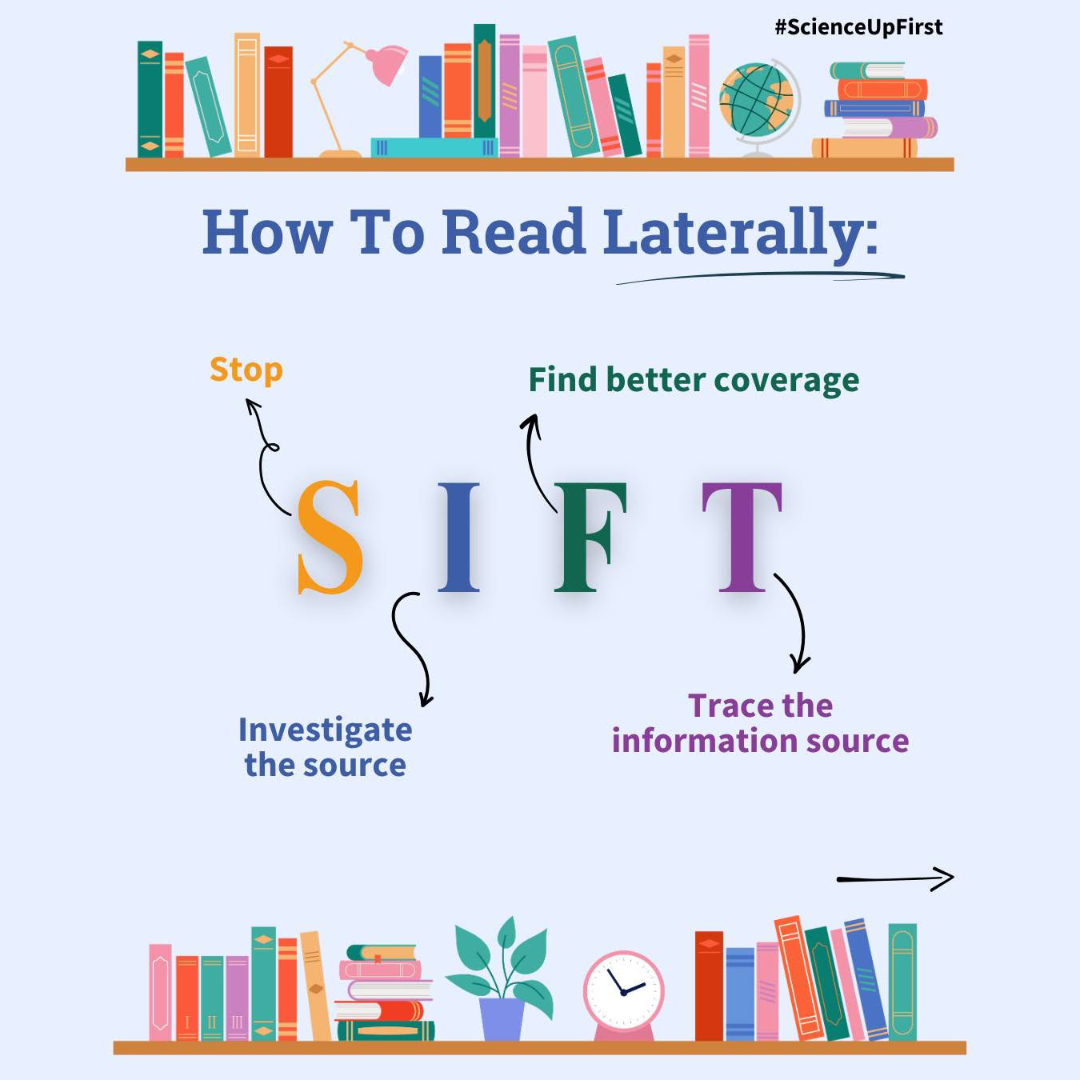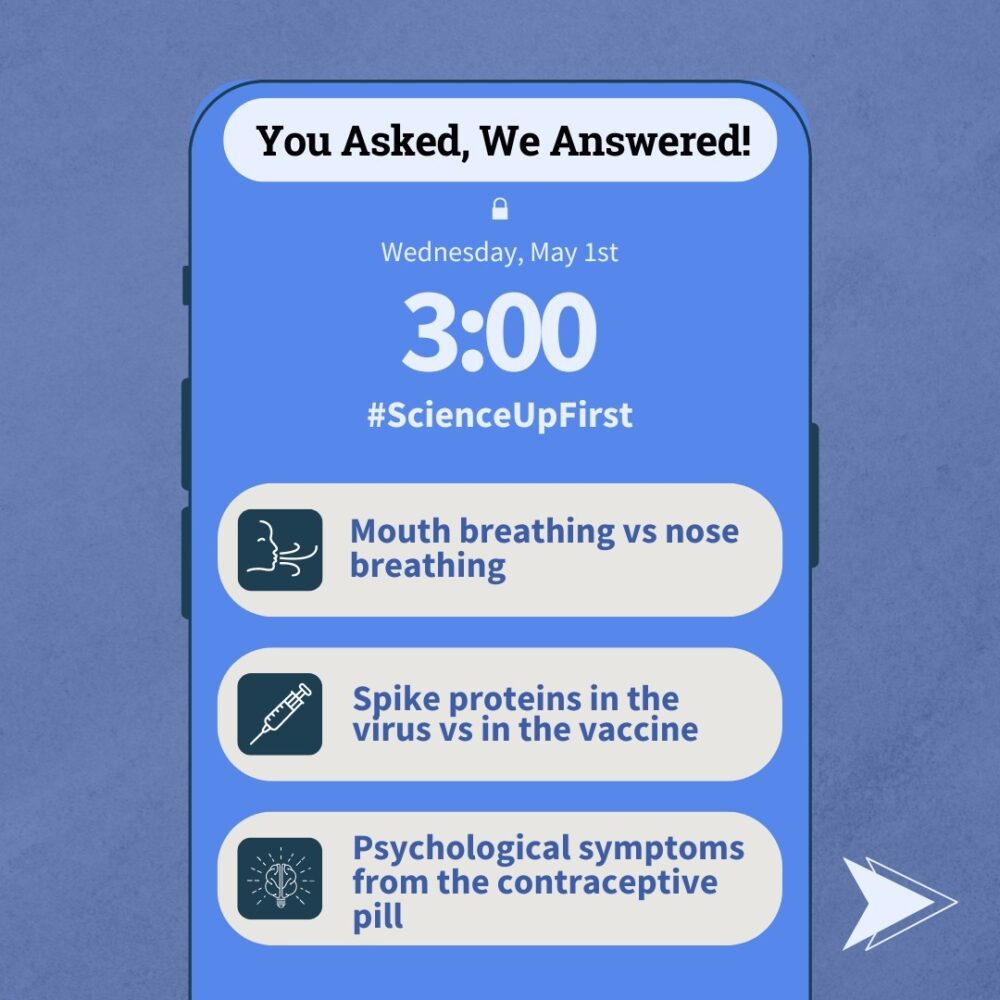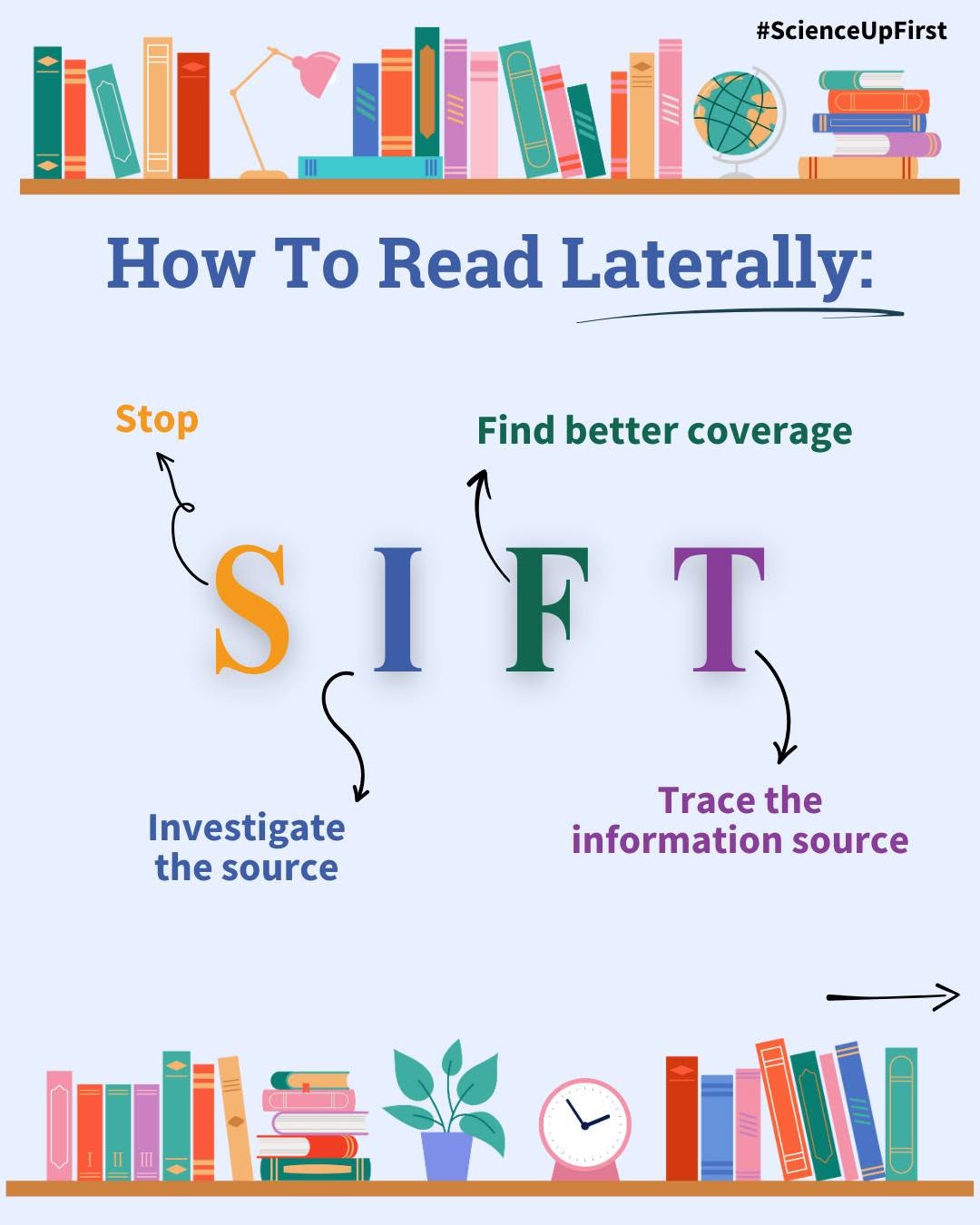
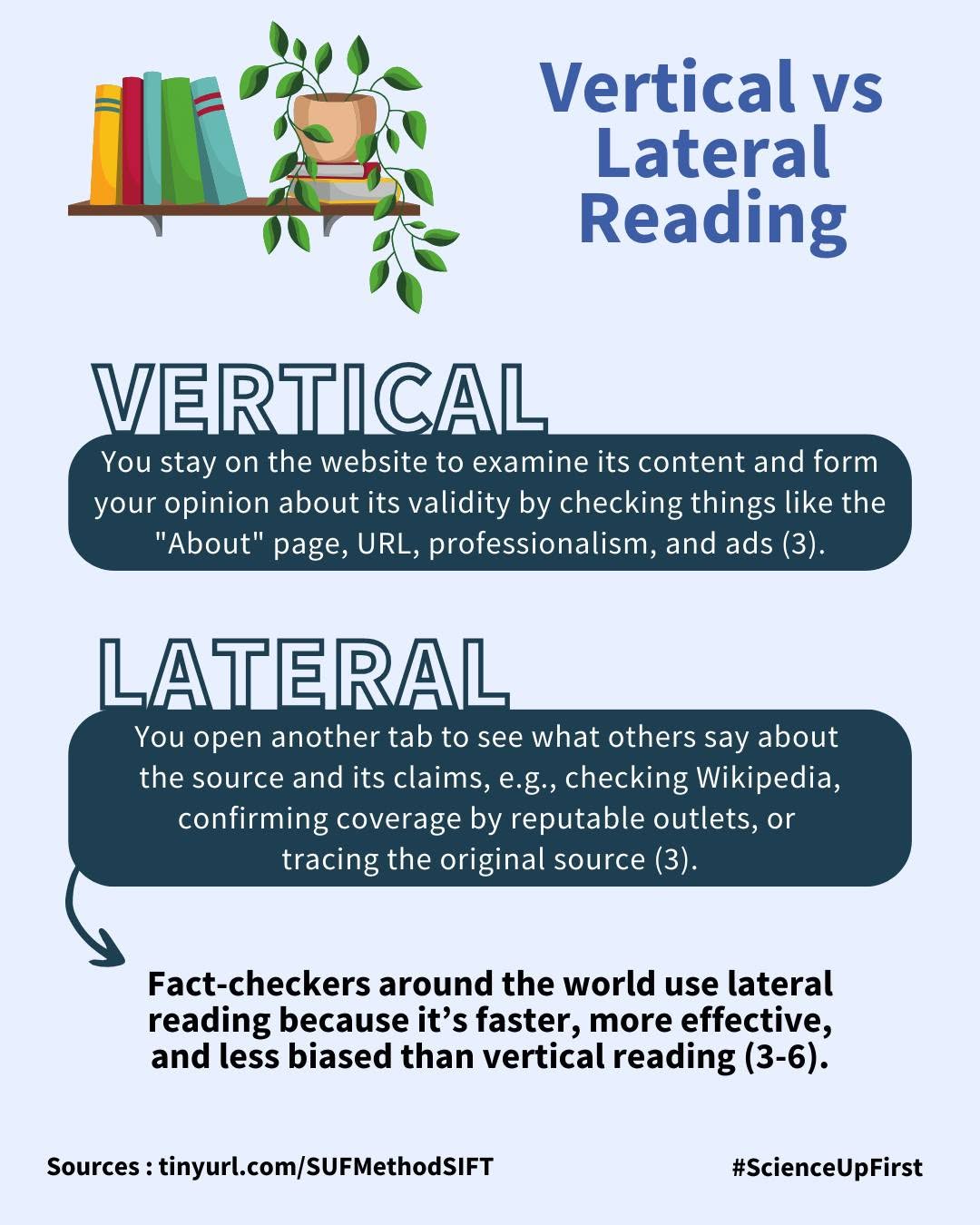
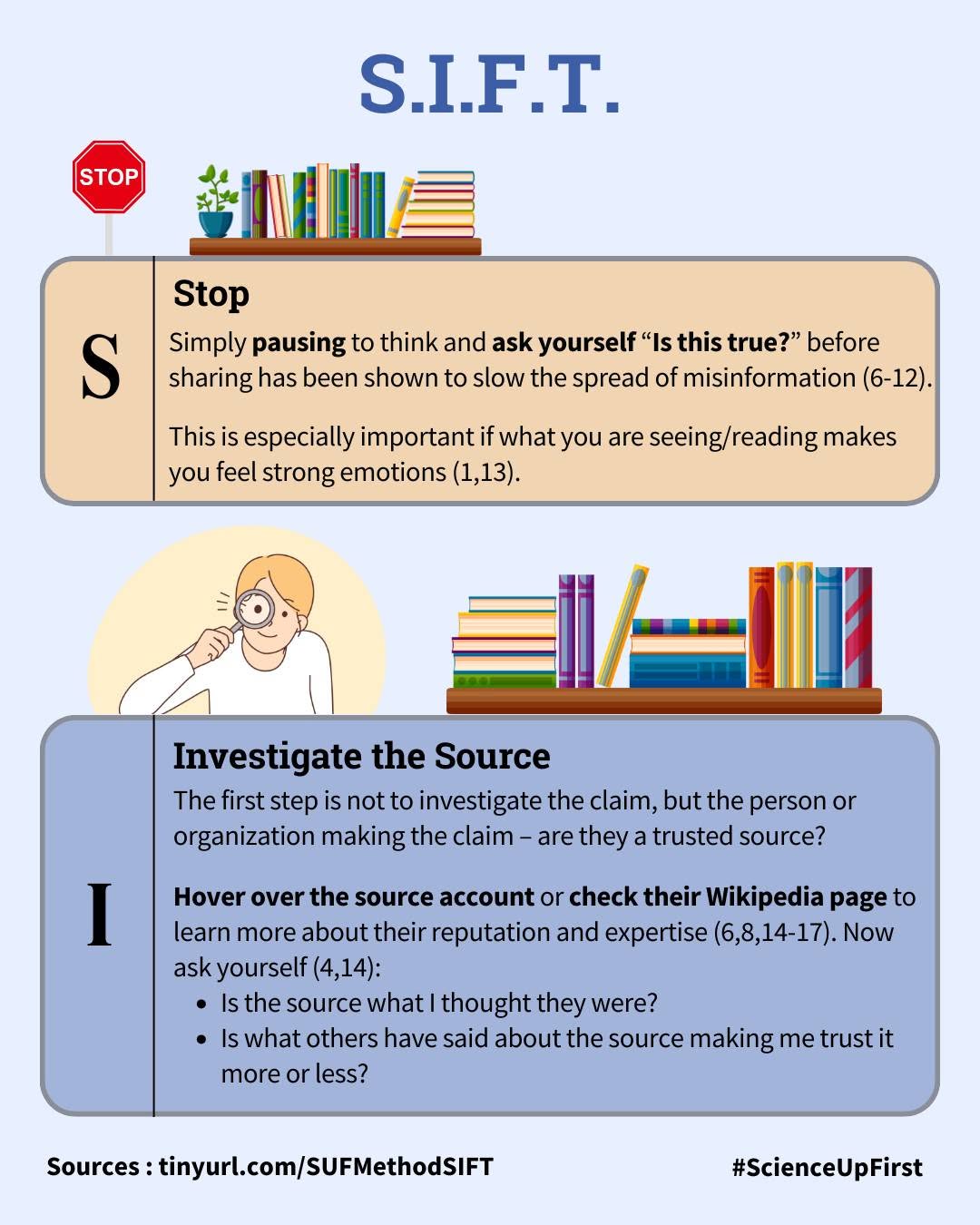
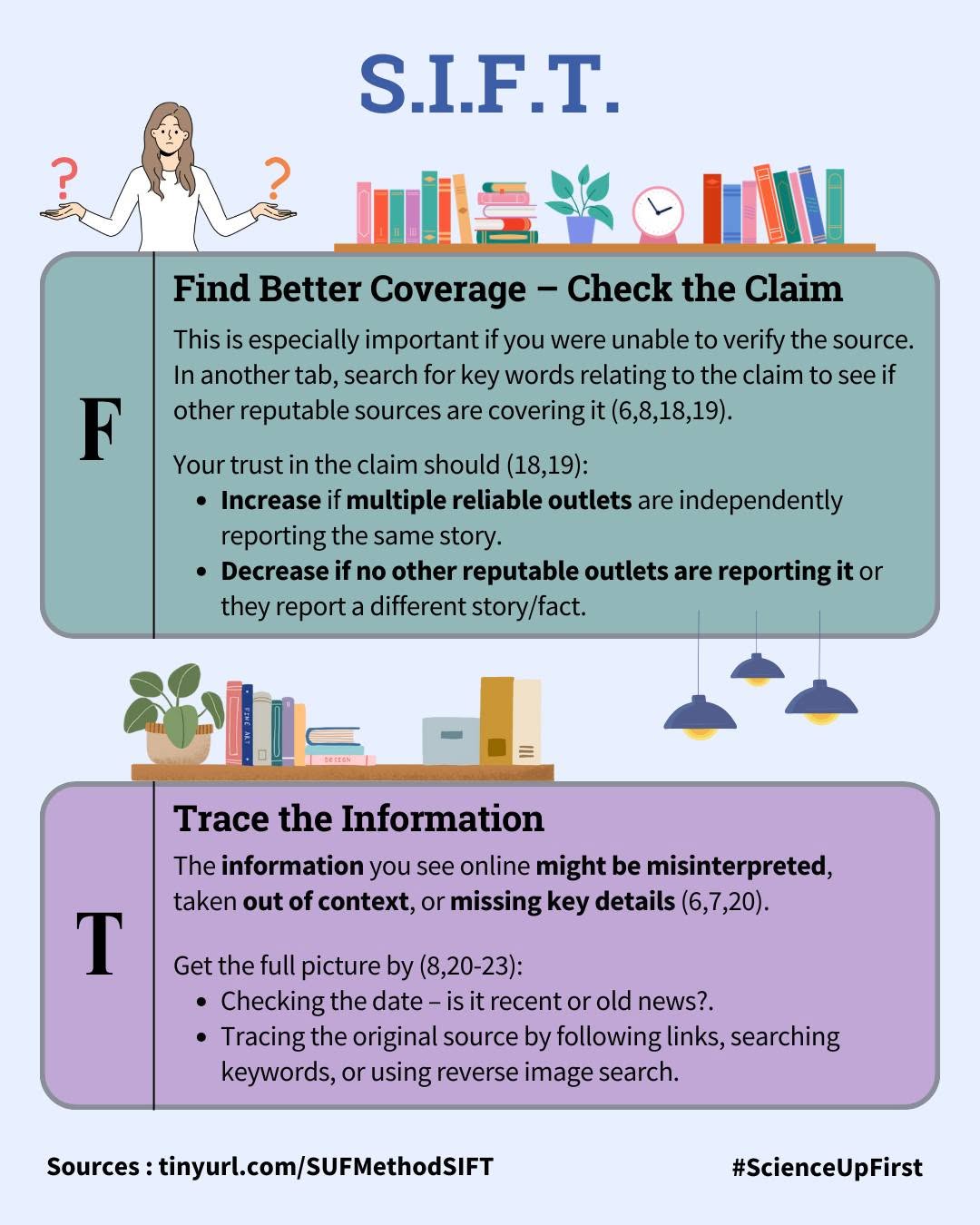
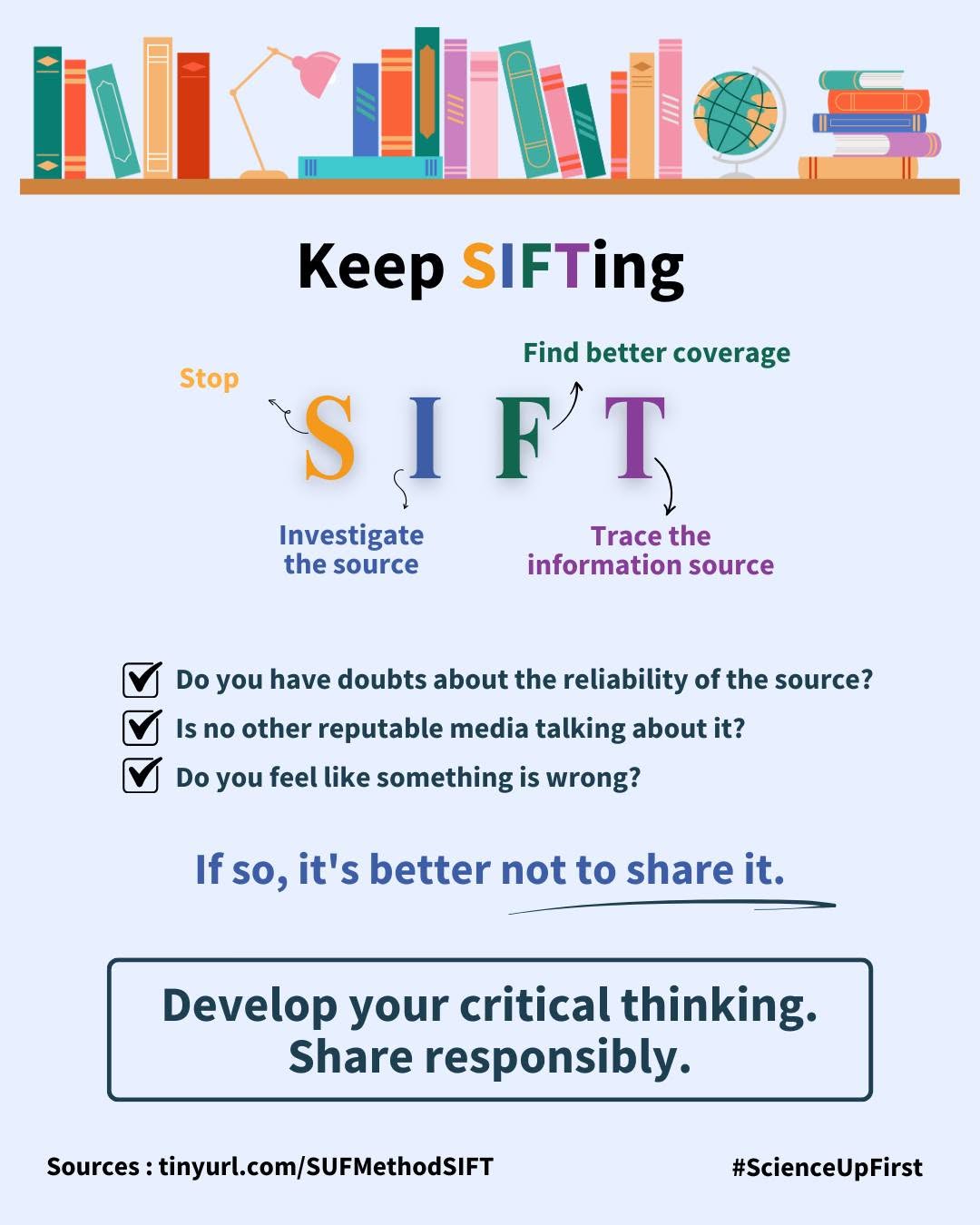
Do you know the difference between vertical and lateral reading? Fact-checkers use lateral reading because it is faster, more efficient, and less biased than vertical reading.
The SIFT method involves stopping, investigating the source, finding better coverage and tracing the information. We’ll summarize each point for you so you know how to SIFT.
Tip #1: After the website URL, you can add the name of the site you want to search on (e.g., Wikipedia) to find relevant pages more easily.
Tip #2: In Google Chrome, right-click an image and select “Search with Google Lens” for a quick reverse image search (24).
Remember, if you have doubts about the reliability of a source, if no other reputable media outlet is reporting the information or if you feel like something is wrong, it is best not to share it.
Would you like to know more about the SIFT method? Take a look at the CTRL-F website. You will find resources, educational materials, examples and activities to perfect your lateral reading technique.
- Sifting Through the Coronavirus Pandemic | Infodemic
- Why Verify? | CTRL-F: Find the Facts
- Simple but powerful skills to evaluate online information | Digital Media Literacy – Teaching Resources
- New research shows successes in teaching ‘lateral reading’ techniques | Center for an Informed Public | December 2021
- Lateral Reading: Reading Less and Learning More When Evaluating Digital Information | SSRN | November 2019
- The ‘Sift’ strategy: A four-step method for spotting misinformation | BBC | May 2024
- SIFT (The Four Moves) | Hapgood | June 2019
- Social Media – Savvy Info Consumers | Library Guides at University of Washington Libraries
- Fighting misinformation: Why pausing before you share really works! | MediaSmarts | April 2022
- Accuracy prompts are a replicable and generalizable approach for reducing the spread of misinformation | Nature Communications | April 2022
- Shifting attention to accuracy can reduce misinformation online | Nature | March 2021
- Fighting COVID-19 Misinformation on Social Media: Experimental Evidence for a Scalable Accuracy-Nudge Intervention | SAGE Journal | July 2020
- Misinformer Tactic: Stirring Up Emotions | ScienceUpFirst | July 2024
- Source | CTRL-F: Find the Facts
- Wikipedia: Strengths & Weaknesses | Otis College of Art & Design | January 2025
- Let’s hover! | Infodemic | February 2020
- Just add Wikipedia | Infodemic | February 2020
- Claim | CTRL-F: Find the Facts
- News search cross-check
- Trace | CTRL-F: Find the Facts
- Check the date | Infodemic | February 2020
- Click through and find | Infodemic | February 2020
- Information in a pandemic flies fast | ScienceUpFirst | June 2022
- Search with an image on Google | Computer
Share our original Bluesky post!
Doing your own research? Fact-checkers use lateral reading because it is faster, more efficient, and less biased than vertical reading. It’s called the SIFT method. 👉https://scienceupfirst.com/misinformation-101/how-to-read-laterally-sift/ #ScienceUpFirst #SciLit
— ScienceUpFirst (@scienceupfirst.bsky.social) October 10, 2025 at 9:55 AM
[image or embed]
View our original Instagram Post!

